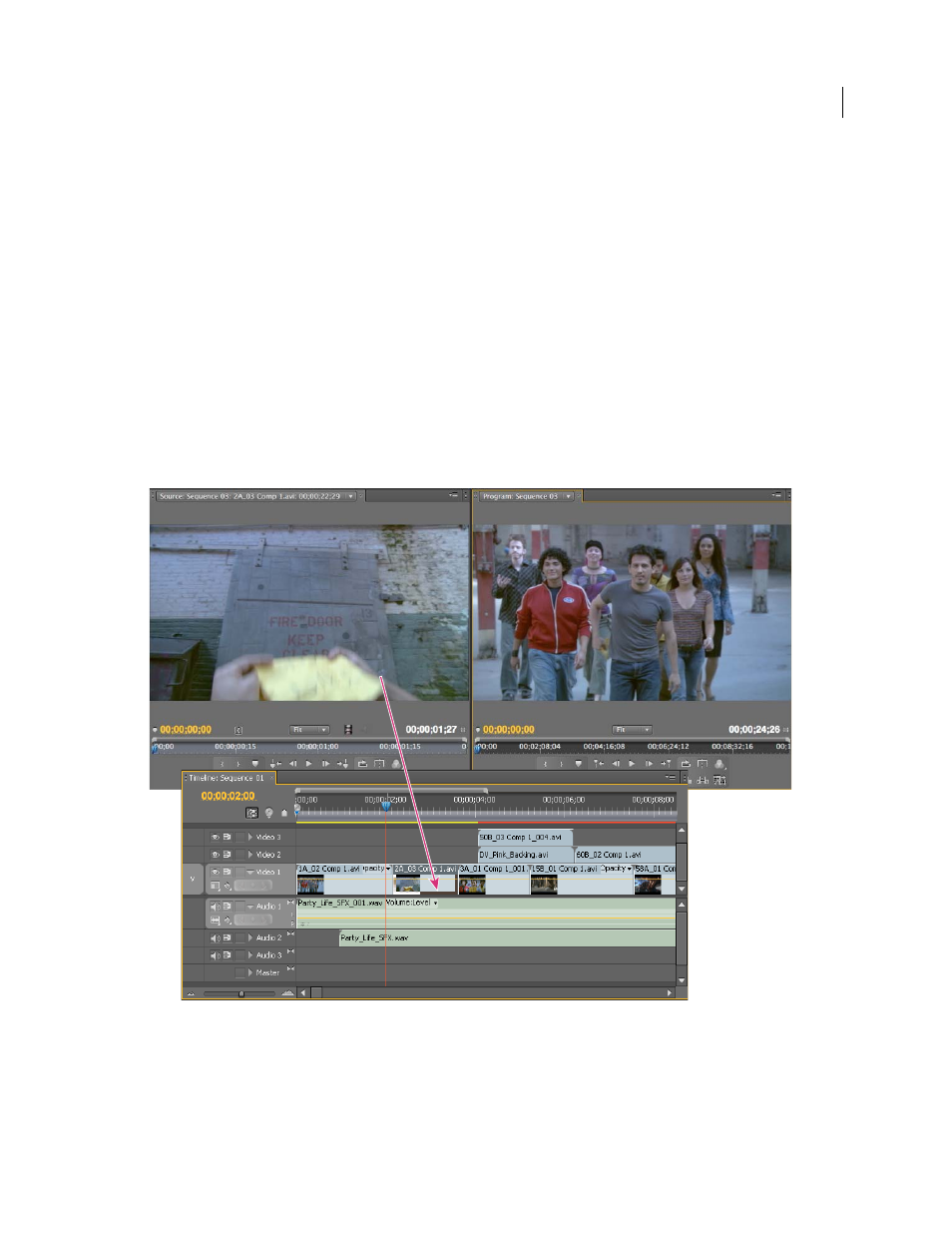Adobe Premiere Pro CS4 User Manual
Page 27

21
USING ADOBE PREMIERE PRO CS4
Workflows and system setup
Last updated 11/6/2011
You can also import a variety of digital media, including video, audio, and still images. Premiere Pro also imports
Adobe® Illustrator® artwork or Photoshop® layered files, and it translates After Effects® projects for a seamless,
integrated workflow. You can create synthetic media, such as standard color bars, color backgrounds, and a
countdown. (See “
About capturing and digitizing
You can also use Adobe® Bridge to organize and find your media files, and then use the Place command in Adobe
Bridge to place the files directly into Premiere Pro.
In the Project panel, you can label, categorize, and group footage into bins to keep a complex project organized. You
can open multiple bins simultaneously, each in its own panel, or you can nest bins, one inside another. Using the
Project panel Icon view, you can arrange clips in storyboard fashion to visualize or quickly assemble a sequence.
4.
Assemble and refine a sequence
Using the Source Monitor, you can view clips, set edit points, and mark other important frames before adding clips to
a sequence. For convenience, you can break a master clip into any number of subclips, each with its own In and Out
points. You can view audio as a detailed waveform and edit it with sample-based precision. (See “
Source Monitor, Program Monitor, and Timeline panel
You add clips to a sequence in a Timeline panel by dragging or by using controls in the Source Monitor. You can
automatically assemble clips into a sequence that reflects their order in the Project panel. You can view the edited
sequence in the Program Monitor or watch the full-screen, full-quality video on an attached television monitor. (See
“
